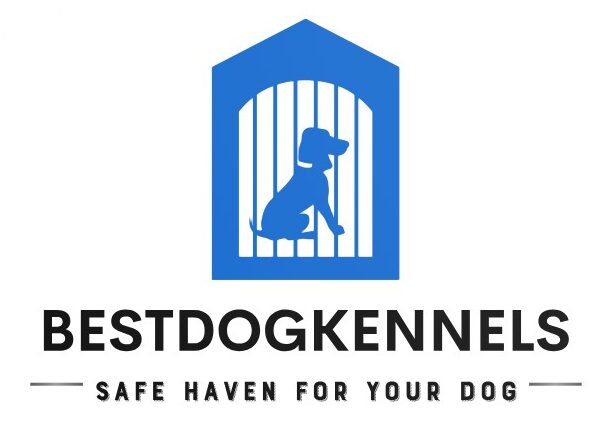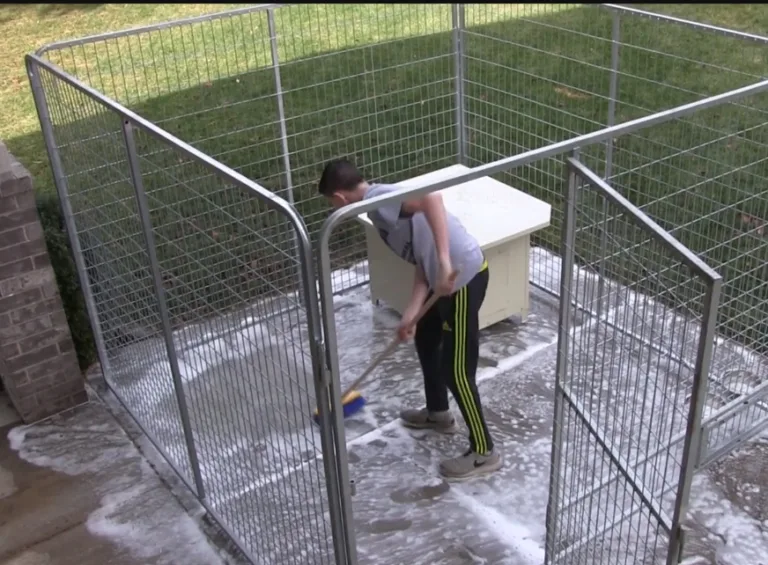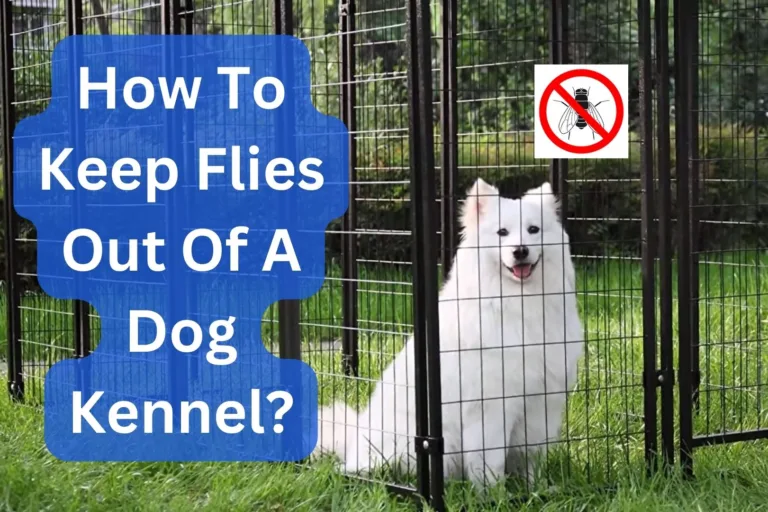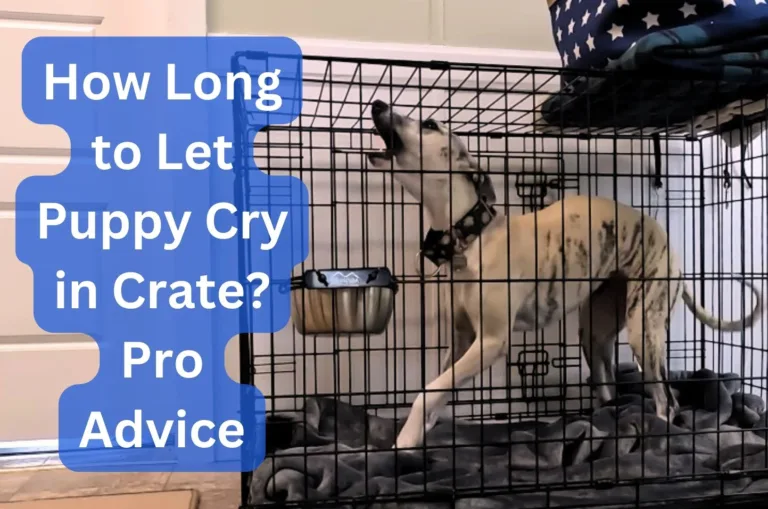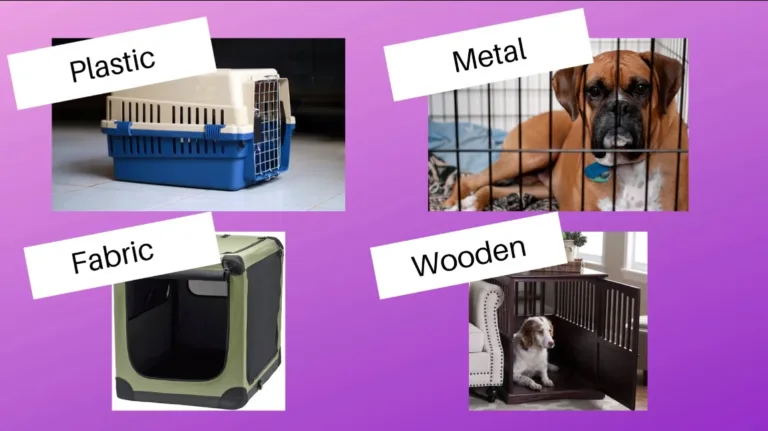How to Stop a Dog From Chewing on a Metal Crate – 12 Ways
It’s common knowledge that a dog’s favorite pastime is chewing whatever he can get his paws on.
For that reason, dog parents tend to leave their pup alone whenever he’s happily munching on something. Even if that something is his own crate.
However, we know from experience that excessive chewing of his own crate can cause major dental problems for your pup.
Thus, it’s better for you to stop him before you’re forced to go running to the vet in a state of emergency.
But with that said, how do you stop a dog from chewing on a metal crate?
The best way is to divert his focus from the crate to a soft, chewable doggy toy (preferably a treat stuffed Kong). You must also regulate the amount of time he spends in the crate, as his biting may indicate that he wants out.
There are several other ways to get your dog to stop chewing on his metal crate after you identify what the root cause of his behavior is.
To learn more about these methods, make sure you check out the guide below.
Table of Contents
Can a Dog Chew Through a Metal and Plastic Crate?
A dog’s teeth are much stronger and sharper than an average human’s. However, even with those teeth, dogs cannot chew through metal crates.
Still, it’s not wise to let him continue to chew the metal bars on his crate, as that will weaken his teeth over time.
Plastic crates are a different story, as a dog can chew through them relatively easily.
If he starts taking a liking to it, he can even bite a piece off and ingest it, which is even more dangerous.
How to stop a dog from chewing on a metal crate – 12 Ways
We’ve already established that chewing on a metal crate can be really bad for your dog’s dental health. But how do you go about stopping him?
Well, we’ve come up with a few methods that worked for us in the hope that they work for you as well.
Introduce Chew Toys, Regular Toys and Appropriate Bedding

If you haven’t introduced chew toys or even regular toys into your dog’s crate, then you’ve definitely missed a trick.
Chew toys work perfectly in redirecting your dog’s chewing behavior to a softer, more plush alternative that won’t hurt his teeth.
You could even stuff his chew toys with treats to entice him into playing with them instead of the bars on his crate. We’d recommend Kongs as our chew toys of choice.
In addition to giving him something to chew, it’s also important to keep him mentally stimulated.
Puzzle toys and regular stuffed toys work perfectly in that regard, as they keep him engaged long enough for him to forget about his crate.
Lastly, make sure the bedding in his crate is comfortable so that he doesn’t start chewing his crate out of discomfort.
Take Him on Regular Walks to Wear Him/Her Out
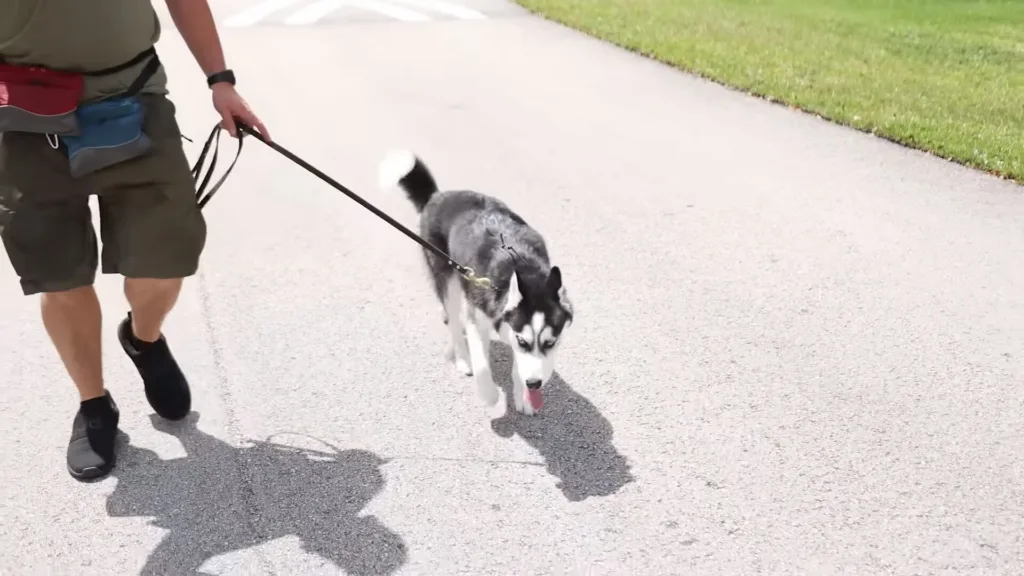
Along with mental stimulation, you also need physical stimulation to wear him out completely.
Exercises like long walks in the park, playing fetch, and providing him with his favorite treat-filled toy need to become regular parts of his routine.
Especially if you’re going to leave him in his crate for an extended period of time afterward.
Do this, and you’ll notice that by the time you get back home, he won’t have any energy to do anything other than rest.
Use Deterrent Sprays
You shouldn’t discourage your dog from chewing altogether, as it’s a necessary pastime for him that lets him stay busy and clean his teeth in the process.
However, you can deter him from destructive chewing that causes harm to him and your property.
So, while you’re introducing new chew toys to him, try spraying the bars of his crate with bitter liquids.
Over-the-counter deterrent sprays are available at almost every pet store you can find. The bitterness of the spray should keep your dog from chewing on his crate, at least temporarily.
However, make sure not to spray the entire crate, as that could put him off from eating anything.
Use Commands to Train Him not to Chew
Once your dog has acclimated to living with you, he’ll start understanding your commands. It then falls on you to use positive reinforcement to get him to follow your commands.
Like for example, when you first introduce a chew toy into his crate, and he starts chewing it instead of the crate, make sure to praise him and give him a treat as a reward. Use the same reward system for all the good things he does.
Similarly, if he tries to chew his crate, deter him by commandingly saying “No.” If he follows your command, reward him with a treat stuffed chew toy that redirects him from the crate.
Repetition of these actions will eventually train your dog to chew his toys instead of his crate just to gain your approval.
Switch up The Crate
In order to keep your pup nice and relaxed, you need to fit him into a crate that gives him enough space to stretch, move around and lay down.
Otherwise, they may engage in aggressive behavior that involves biting and chewing the crate’s bars or gate.
Fortunately, there are plenty of different types of metal crates available in the market. These crates majorly differ in their size and the strength of their bars.
Smaller breed dogs can comfortably live in flimsy metal crates. On the other hand, larger breeds need stronger steel crates to keep them from breaking out.
The most important thing, however, is to make sure your dog’s comfortable in his crate. If you can ensure that, your dog won’t have a reason to act aggressively.
Gradual Crate Training
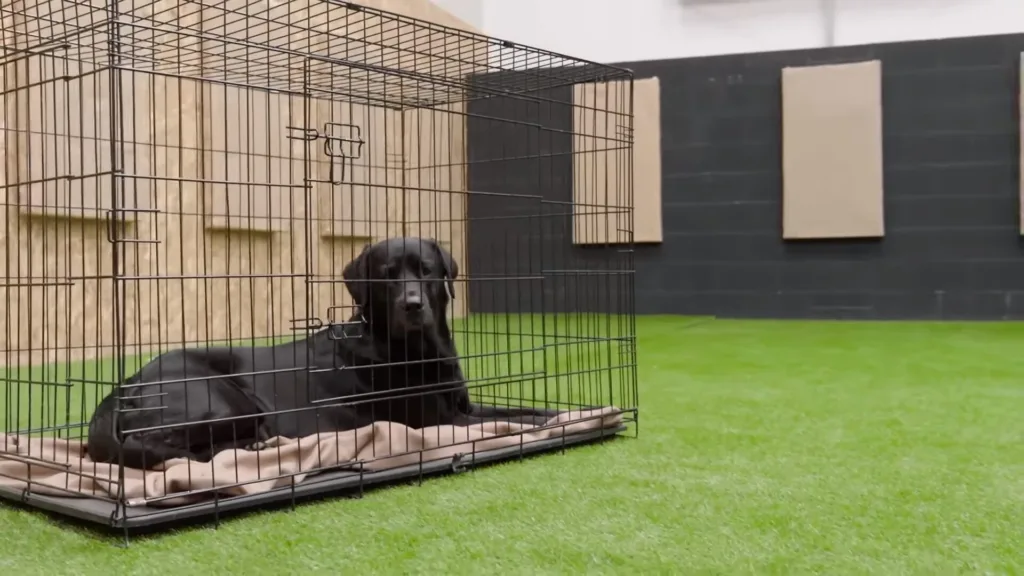
The behavior your dog exhibits toward his crate depends a lot on how he’s been introduced to it.
If he’s been shoved into it unceremoniously, then he will eventually grow to hate it and bite the bars in defiance.
That’s why most dog experts, including us, recommend introducing your dog to his crate gradually. Start with shorter intervals and let him out immediately if he starts whining.
Increase the time he spends in there gradually until he voluntarily stays in his crate even when the door’s open.
Use Positive Association to Lure Him into The Crate
In addition to introducing the crate slowly, you also need to make sure you create a positive association with the crate.
The best way to do that is to shower him with praise and treats whenever he steps inside. Also, create a habit of feeding him inside his crate, not when he comes out.
Otherwise, he may start believing that he’s being rewarded for leaving. Additionally, provide him with toys when he’s inside the crate to get him to spend some quality time in there.
Lastly, never push him into the crate when you’re angry with him, as that’ll destroy all his positive associations with the crate.
The key is introducing the crate as a positive space, not as a punishment, so he volunteers to go inside instead of having to be forced inside.
Reduce the Time he Spends in The Crate
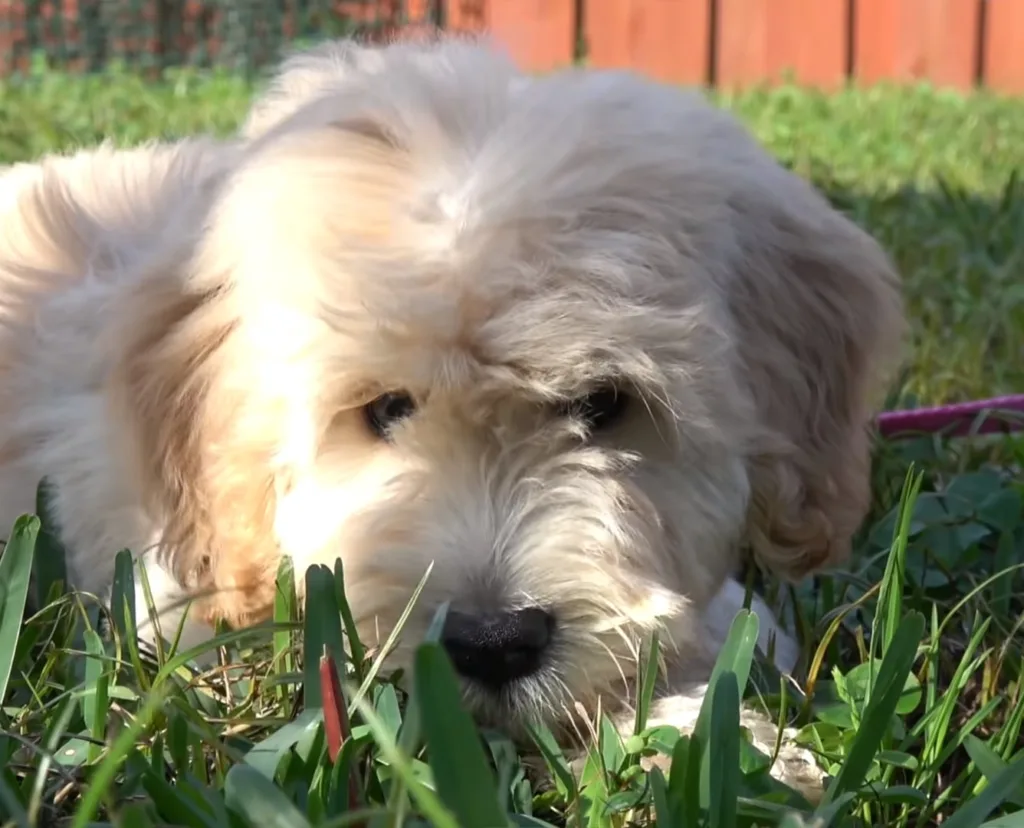
Ask any professional, and he’ll tell you not to keep your dog in his crate for more than 8 hours. It can make them anxious and stressed, eventually resulting in them chewing the crate.
This can often be a conundrum for most working dog parents as their work timings require them to spend more than 8 hours away from home.
In cases like this, it might be beneficial to ask a friend or family member to take your dog out for a walk once during the day.
Alternatively, you could also leave your dog in a daycare facility when you’re heading to work.
Re-introduce the Crate Properly
When you first introduce your dog to his crate, there is a slight chance that he will reject it completely.
The key, then, is not to force him into the crate immediately but to reintroduce it to him gradually. This may entail letting him sleep with you for a few nights.
However, even during this period, it’s highly important that you take him to visit his crate continuously. Try leaving treats and some of his toys in his crate.
If he takes the bait and enters, make sure to praise him and reward him with even more treats.
Repetition of these acts will reaffirm the crate as a positive space to your dog until he eventually starts going in voluntarily.
Deal With Separation Anxiety
Dogs that have been rescued or have a traumatic past often develop separation anxiety with their new parents.
In cases like this, it becomes incredibly difficult for them to associate any positivity with their crate. Now, there are a few ways of dealing with this as well.
One way is to stay close to your pup even when he’s in the crate. However, that’s obviously not a feasible solution as you can’t always stay close to him.
A better solution is contacting a professional and taking his/her advice, something we’re about to get into in the next section.
Seek the Advice of a Professional
Provided you’ve tried all the methods we’ve discussed to this point, and none of them have worked, you can seek help from a professional.
Professional dog trainers and behavioralists exist to guide you in dealing with a dog that’s exhibiting problematic behaviors like separation anxiety.
They’ll probably provide you with a new plan for tackling crate training that involves behavior modifications and maybe some counterconditioning techniques.
Consider Moving him into a Crate Alternative As a Last Resort
If all else fails, your last resort should be taking your pup out of his metal crate and settling him in an alternate home. That is, until he tones down his destructive tendencies.
His alternate home could be a doggy playpen or a room in the house that’s been dog-proofed to give him some extra space.
However, make sure you put in some proper confinement measures to ensure he doesn’t run amok in the house.
Finally, keep in mind that the key to learning how to stop a dog from chewing on a metal crate is all about patience and positive reinforcement.
Dogs are smarter than they look and will only be comfortable in the crate once they confirm that it’s a good place.
Why Does My Dog Chew and Bite His Kennel or Crate?
There are several reasons why a dog may chew and bite his kennel.
If he’s a well-behaved pup that hasn’t shown any noticeable signs of aggression against his crate, then he could be in the teething phase.
Dogs chew any object they can while teething to alleviate the pain they feel during the process.
Alternatively, your dog could just be bored of sitting in the crate for too long and is trying to stimulate himself mentally and physically by biting the crate.
Stress and separation anxiety could also be potential reasons, but you should still consult a professional to confirm that.
Can Chewing a Crate Affect My Dog’s Teeth?
Even though a dog’s teeth are strong, consistently chewing the metal bars of his crate could wear down his teeth.
And if a particular tooth gets too worn, it may have to be removed by a vet.
What is the Treatment for Worn Teeth?
Depending on the visual inspection results and the dental radiograph, a vet may treat worn teeth quite differently.
For example, if the dental radiograph signals that the worn-down teeth are vital (alive), a vet may opt for simple root canal therapy.
However, if it turns out that the worn down teeth are non-vital (dead), then they might have to replace it with a crown after a successful root canal.
What are Some Signs of Destructive Crate Behavior
Dogs that aren’t properly mentally and physically stimulated tend to exhibit destructive crate behavior.
Apart from chewing on the bars of their crate, this includes peeing or pooping in their crate and even trying to dig through the crate’s floor.
To add to that, it could also include excessive panting and whining, as well as frantic pacing and general restlessness.
Commonly Asked Questions
Why is my dog tearing up his crate?
Dogs that are stressed, bored, teething or feeling separation anxiety often resort to tearing up their crate.
What Items can be put in a dog’s crate that chews everything?
If your dog chews everything in front of him, you must ensure that the items around him are indestructible and can’t be ingested.
Some examples are indestructible bedding and sturdy chew toys.
How do I stop my dog’s destructive crate behavior?
Understanding and treating the underlying cause of his destructive behavior is the first step in stopping him from exhibiting this behavior.
After identifying it, you can try positive reinforcement, treat-filled chew toys, or even provide him with physical and mental stimulation through other activities to stop this behavior.
How do you crate-train a puppy that’s destructive?
Crate training a destructive puppy is no different than training an ordinary puppy, except that you have to stay more patient with them.
Start by properly introducing the pup to his crate, gradually increasing his time there, and occasionally luring him in there using treats to create positive associations.
How to Stop Dog from Chewing Crate?
Distract him with chew toys or puzzle games until you come up with a more permanent solution.
You could also try taking him for a long walk during the day to make him expend his extra energy.
Why do puppies chew on their metal crate?
Anything from teething, separation anxiety or boredom could cause your puppy to chew on her crate. Consult a professional to figure out the exact issue.
Can Chewing Metal Hurt Dogs?
Yes, chewing metal is dangerous for dogs as it can potentially damage their teeth and gums.
Dog chewed through a wire crate, what to do?
If your dog is powerful enough to chew through the crate, then he/she may need more mental and physical stimulation to tire them out before you put them in the crate. Take them for daily exercise outside, and you should see a difference in their behavior.
How to stop my dog from chewing his crate when I’m not home?
The best way is to not overpopulate his/her crate. Just leave a bowl of water, and some chew toys in there to ensure she stays mentally stimulated until you get home.
What to do if my new puppy is chewing on his metal crate?
Try inserting chew toys into his crate. If he doesn’t take to them initially, try filling them with treats or introducing a frozen one to entice him into chewing them.
How to stop my dog from chewing on his metal bowl?
The easiest solution here is to take the bowl out after some time and replace it with Kongs (chew toys).
Mix it up by using frozen Kongs or Kongs filled with peanut butter, and he should forget all about the bowl.
How to stop dog from chewing bed in crate?
Spring for indestructible bedding and provide your dog with some chew toys. As soon as he notices that the bed isn’t budging but the chew toy is, he will switch to that.
How to stop dog from chewing blanket in crate?
If your dog actively chews his own blanket then he might be bored, or he might’ve been in the crate for too long. Take him out for a walk and some exercise to stop him from chewing his blanket.
How to stop dog from chewing crate bed?
First thing you have to do is buy some indestructible bedding to stop him from ingesting anything. Next, you could try providing him with a few chew toys to divert his attention from the bed.
How to stop dog from chewing crate pad?
If your pup’s chewing or pawing at his crate pad, then that could be a sign of separation anxiety.
In that case, you need to consult a professional who should provide you with a behavior modification plan. Use the new plan to stop your pup from chewing on his crate pad.
How to stop dog from chewing crate tray?
A bit of training can straighten up a dog’s behavior, at least temporarily. So, if you want to stop your dog from chewing his crate tray, you must firmly say “no” when he starts chewing.
If he stops when you say the word, reward him by praising and giving him treats.
How to Stop a Dog From Chewing on a Metal Crate: A Game of Patience and Consistency
That folks, brings us to the end of our guide on how to stop a dog from chewing on a metal crate.
We believe we’ve covered all that you could possibly want to know on the subject, but if you do have some additional questions, make sure to leave them in the comments below.
And remember, putting a stop to your dog’s destructive tendencies may seem difficult at first, but with enough patience and consistent crate training, you will be successful eventually.
The trick is to get to the root cause of the issue and tackle it directly, perhaps through the help of a professional.
Anyways, if you enjoyed this guide, make sure to check out some of our other posts on doggy crates and crate training. Have a splendid day!
